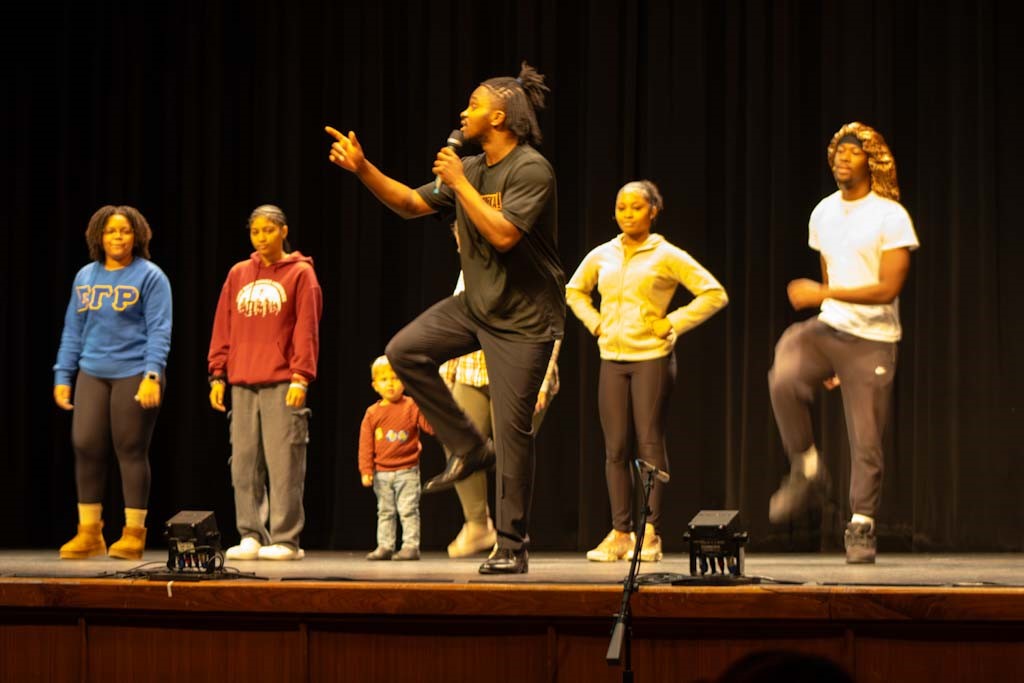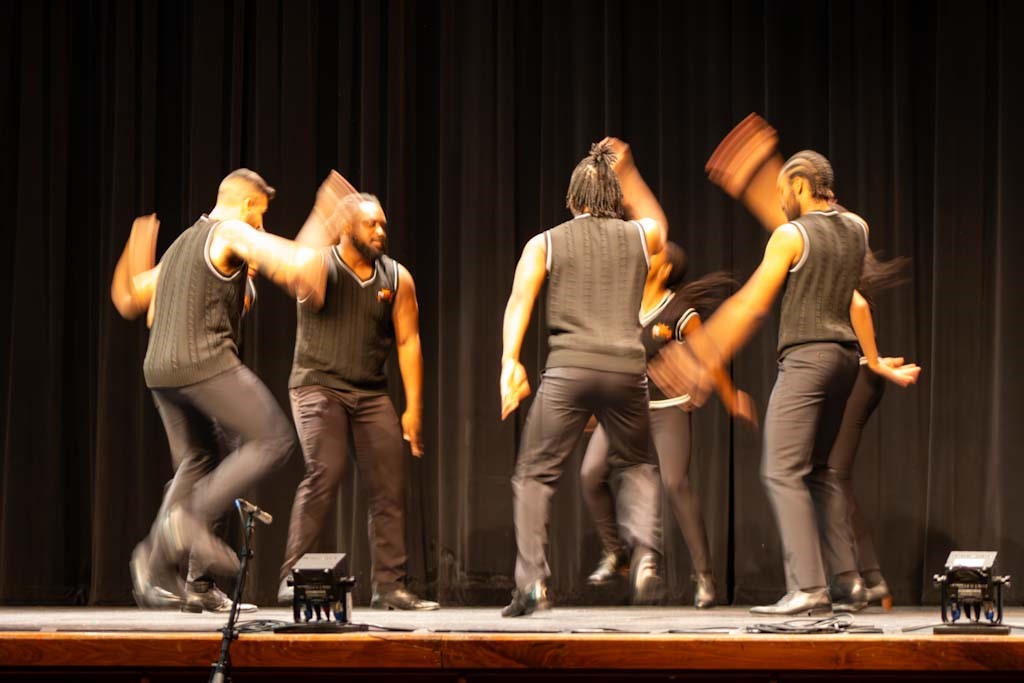On Wednesday, Nov. 13, Williams Auditorium proudly welcomed the performance of Step Afrika!, which featured professional dancers performing the African American college tradition of stepping.
The event was sponsored by the Arts and Lectures Committee, which is part of the Academic Senate. Williams Auditorium Manager Sarah Aker mentioned the goals of making this event happen.

“It is something different than what we have hosted recently,” Aker said. “My hope is that it has a cultural impact on the community.”
Metadata and Electronic Resource Management librarian and assistant professor Dejah T. Rubel was the chief architect behind the event. She explained her role in the event and why she recommended Step Afrika! to the committee.
“As part of the University Senate Committee on Arts and Lectures, I wanted to bring a dance performance to Ferris,” Rubel said. “I decided to focus on dance styles that were more flexible when it came to surfaces, and after watching several seasons of ‘Lifetime’s Bring It!,’ stepping was definitely on my list.”
Rubel mentioned the Black fraternities and sororities involved in stepping prior and how she wanted to introduce it to those on campus.
“I also knew that we have a stepping troupe participating and a robust Black Greek community whose skills are rarely enjoyed outside of their friend group,” Rubel said. “So, for those who have not seen stepping before, Step Afrika’s Step 101 was the perfect blend of cultural education, audience participation and artistic appreciation.”
The event was free, open to the public and included different dances and performances, all involving cohesive stepping choreography.
Stepping uses the body as an instrument, prioritizing footsteps, body slapping, clapping and spoken words to create a rhythm. This percussive dance is also a form of storytelling, offering the audience a sense of connectivity with the performers.
In one part of the act, the audience could even participate in stepping. Audience members volunteered to get up on the stage and were able to learn how to rhythmically perform the different stomps, steps, claps and spoken words that involve the dance.
The history of stepping dates back to the early 20th century, when specific colleges had newly enrolled African American students. These students started fraternities to help the community, and stepping became a form of showing love for these organizations.
The show included not only the history of the dance but also a participatory performance. It included challenges between performers and a unique performance called the South African gumboot dance.

The performers replicated the dance, wearing bandanas and garbs that resembled the clothing of South African mine workers.
This part of the performance left an impression on one particular audience member, integrative studies junior Blake Carlson.
“The gumboot dance was sweet,” Carlson said. “That was my favorite part of the performance. It was a unique experience to watch performers dancing wearing boots.”
While the performance included various acts and interactive experiences that engaged the audience, some audience members expressed their surprise at the low turnout and lack of communication they received about the event. This observation was especially noticeable to medical student freshman Nae Woods.
“I didn’t know if this was a private thing or what,” Woods said. “We have people come to our school all the time for things, and yet I didn’t know it was a school-related event at all.”
For the students that attended, there appeared to be a mismatch in communication. For some, like Woods, it was a spur-of-the-moment decision to attend the event.
Regardless, Step Afrika! brought a different event to Ferris and offered a fun, interactive time for students and local community members who were involved.
